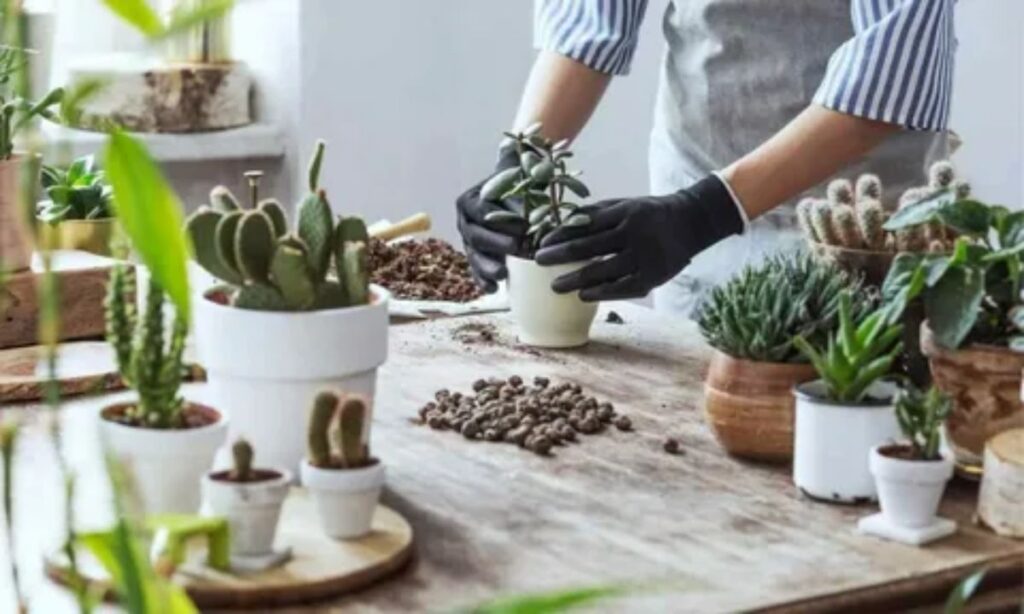The Top Online Store for Cannabis Grow Supplies
Looking for the best cannabis cultivation gear? GrowGeneration is a leading national retailer specializing in hydroponic equipment and supplies for home and commercial growers. With over 60 locations across 13 states, they offer a wide selection of grow lights, tents, nutrients and more from top brands. Their knowledgeable staff provides expert advice to help you maximize your indoor or outdoor garden’s potential.
What is Best for Growing Cannabis?
Growing cannabis successfully requires the right equipment and supplies. The most crucial factors include high quality seeds or clones, nutrient rich soil or hydroponic system, proper lighting, ventilation, and temperature/humidity control. Here are some top recommendations:
- Seeds/Clones: Obtain genetics from reputable breeders like Barneys Farm, Dutch Passion or Sensi Seeds for consistent quality.
- Soil: Use a premium potting mix like Fox Farm Ocean Forest or Mother Earth Coco + Perlite mix.
- Nutrients: Invest in a complete nutrient line like General Hydroponics Flora Series or Advanced Nutrients.
- Lighting: LED grow lights like Spider Farmer or HLG are energy efficient and produce high yields.
- Ventilation: Adequate airflow is key – use inline fans and carbon filters to control odors.
Always follow your local laws and regulations regarding cannabis cultivation.
What is the Best Cannabis Grow Journal App?
Maintaining a detailed grow journal is essential for tracking your plants’ progress and identifying areas for improvement. While pen and paper works, grow apps offer more features:
- GrowBuddy: Simple interface to log feedings, deficiencies and harvest details across multiple grow cycles.
- Grow Weed App: Comprehensive app with strain guides, calculators for nutrients/yields and automated reminders.
- Budly: Connect with other growers, share photos and access helpful grow advice from the community.
The best app ultimately depends on your personal needs and preferences as a grower.
What does GrowGeneration Corp Do?
GrowGeneration Corp is a national chain of specialty retail hydroponic and organic gardening stores in the United States. They sell nutrients, growing media, lighting technology, plant training products and other supplies for both soil and hydroponic growing.
Some key facts about GrowGeneration:
- Founded in 2014, headquartered in Denver, Colorado
- Owns and operates over 60 retail locations across 13 states
- Major supplier of equipment/supplies to home growers and commercial cultivators
- Acquired several regional hydroponic suppliers to expand national footprint
- Generated over $422 million in revenue in 2022
For home growers or large scale commercial operations the GrowGeneration offers a wide range of products to outfit any growing setup.
What is the Meaning of Grow House?

A grow house or grow op refers to a residential building or outbuilding used for the illegal cultivation of cannabis plants. It is essentially an indoor grow operation set up within a house or other structure.
Some key characteristics of grow houses:
- Windows are blacked out to prevent light from escaping
- Powerful lighting systems are installed to maximize plant growth
- Extensive ventilation, dehumidifiers and air conditioning units control climate
- Plants are grown on racks, tables or directly on floors using hydroponic systems
- Heavy-duty electrical setup draws large amounts of power to run equipment
Grow houses enable cultivators to produce cannabis year round in a concealed, controlled environment away from public view.
How Big is a Grow House?
The size of a grow house can vary significantly based on the scale of the operation and the available space. Some common grow house dimensions include:
- Small-scale: Converted closet (4’x4′), spare bedroom or basement (~100-300 sq ft)
- Medium-scale: Detached garage or small house (~500-1000 sq ft)
- Large-scale: Warehouse, barn or multi unit dwelling (~1000+ sq ft)
Larger facilities enable cultivators to maximize plant yields and produce high volumes but also increase operational costs and risks of detection.
Grow house sizes are often limited by electrical capacity to power grow lights, fans, dehumidifiers etc. Having insufficient space also leads to problems like mold, pests and plant stress from overcrowding.
How do you Set Up a Grow House?
Setting up a proper grow house requires careful planning and preparation. Here are the key steps:
- Choose a Location: Find a secure, discreet space with adequate power, ventilation potential and accessibility.
- Prepare the Space: Insulate, light proof the area, install ventilation and seal any openings. Add intake/exhaust fans and ducting.
- Set Up Growing Area: Construct benches, tables or racks to hold plants. Install grow lights, ballasts and timer controls.
- Install Climate Control: Add A/C, dehumidifiers, fans, CO2 generators and monitoring equipment.
- Add Growing Medium: Purchase soil or set up hydroponic system with reservoirs and nutrient delivery.
- Plant and Cultivate: Germinate seeds or introduce clones, add supports, trim/train plants and tend daily.
- Harvest and Process: Flush plants, harvest buds, trim, dry, cure and prepare for distribution.
Maintaining ideal environmental conditions and following proper procedures is crucial for healthy plants and quality product.
How to Use CO2 in a Grow Room?
Increasing CO2 levels is one of the most effective ways to boost plant growth and yields in an indoor grow room. Here are some tips on using CO2 safely:
- Determine CO2 Level: Typical outdoor levels are around 400-500 ppm. Grow rooms should be 1200-1500 ppm.
- CO2 Generation: Use CO2 tanks, generators burning natural gas/propane or CO2 burners.
- Proper Ventilation: Never run CO2 without adequate air exchange and exhaust fans running.
- Monitor Levels: Use a quality CO2 monitor/controller to avoid excessively high levels.
- Air Circulation: Install oscillating fans to evenly distribute CO2 throughout canopy.
- Lighting Schedule: Only enrich with CO2 when lights are on and plants can absorb it.
- Safety Checks: Install CO2 sensors/alarms and avoid entry if very high levels are detected.
Following best practices allows growers to take full advantage of CO2 enrichment while avoiding health risks.
How to Seal a Grow Room?

Properly sealing a grow room is essential for containing odors, maintaining ideal environmental conditions, and avoiding detection. Here are some sealing tips:
- Seal All Openings: Use caulk, spray foam, weatherstripping to close gaps around doors, windows, outlets etc.
- Install Vapor Barrier: Use polyethylene plastic sheeting rated for vapor/moisture control.
- Add a Door Sweep: Use high quality door sweeps at base of entries to block light and odors.
- Seal Ductwork: Seal all ducting connections with aluminum foil tape rated for grow rooms.
- Hang Pandan Curtains: Install overlapping poly curtains at entries to prevent air transfer.
- Maintain Negative Pressure: Exhaust more air than you intake to pull odors towards filters.
- Use Carbon Filter: Install high quality carbon filter on exhaust to scrub odors.
Taking the time to thoroughly seal and contain the environment ensures your grow stays discreet.
Can I Grow Indoors?
Yes, it is possible to successfully grow cannabis plants indoors as long as you can provide the necessary environmental conditions found in nature:
- Lighting: Grow lights replicating the sun’s light spectrum and intensity are a must.
- Temperature: Ideal temps are 70-85°F when lights are on, cooler at night.
- Humidity: 50-70% humidity range during vegetation, lower for flowering.
- Air Circulation: Fans or oscillating air movement prevents mold, strengthens stems.
- Grow Medium: Premium soil mix or hydroponic system to provide ideal root environment.
- Nutrients: Proper nutrient regimen that matches the plant’s growth cycle.
- Space: Minimum 2’x4′ footprint for one plant, scaled up for more plants.
Indoor gardens enable complete control over light cycles and environments year round. Starting a small grow tent or cabinet is an ideal way to get started.
How to Design a Grow Room?
Designing an effective and efficient grow room requires optimizing space, airflow, lighting and other environmental factors. Here are some key considerations:
Layout and Dimensions:
- Maximize vertical height and floor space for plants
- Separate veg and flower rooms if possible
- Allow aisles for accessibility and working space
Lighting:
- Determine light type (HID, LED etc.) and calculate proper coverage
- Mount lights with adjustable/movable hangers
- Arrange lights in staggered pattern to penetrate canopy
Air Handling:
- Install adequate exhaust and oscillating fans
- Use properly sized air cooled hoods or heat exhaust tubing
- Calculate CFM requirements for AC and dehumidification
Environmental Control:
- Integrate humidifiers/dehumidifiers and AC units
- Automate temperature, humidity and CO2 monitors
- Install light leak protection and odor control filters
Grow System:
- Raised beds, benches, racks for plants
- Hydroponic reservoir and nutrient delivery setup
- Drainage system for runoff collection
Electrical:
- Ensure adequate circuit capacity for all equipment
- Install outlets, lighting controllers and safety measures
- Isolate grow room breakers from main electrical panel
Security:
- Lockable entry doors
- Light traps and blackout measures
- Alarm systems and video monitoring
Careful planning allows you to create an efficient, optimized growing space tailored to your specific needs and scale of operation.
What Size Grow Tent for 1 Plant?
The minimum recommended size for growing just one plant in a grow tent is a 2×2 foot tent. This gives enough root and vertical space for one modest sized plant.
However, many growers opt for slightly larger tents to allow more room:
- 2.5×2.5ft Tent: Enough for one plant to be trained and topped
- 3x3ft Tent: Ideal for one larger plant, some training
- 4x4ft Tent: Very spacious for one plant, allows major training
The bigger the tent, the more you can manipulate plant size through training techniques like topping, fimming, lollipopping etc. Larger tents also give you more flexibility with lighting footprints.
Just be sure your tent has the proper height clearance. Most 2-4ft tents are 5-7ft tall but heights vary by model. Your plant’s final size depends on the strain too.
What is a Grow Tent?
A grow tent is a self contained indoor gardening facility made from a light-proof, reflective fabric. It creates an optimum growing environment for plants.
Some key features of grow tents include:
- Lighttight fabric with reflective interior coating to maximize light efficiency
- Reinforced plastic corners and solid metallic poles/frames for structure
- Multiple intake and exhaust ports/vents for air exchange and filter access
- Removable ceiling vents/filters to allow equipment and ducting pass-through
- View windows to check on plants without disturbing the environment
- Tool pockets and adjustable hanging rods/bars for lights and accessories
Quality grow tents allow full control over light cycles, temperature, humidity, ventilation and CO2 levels to replicate ideal conditions year round. Their portability makes them easy to move or disassemble.
FAQs
What’s the Ideal Temperature for an Indoor Grow Room?
The ideal temperature range is 70-85°F when lights are on and around 58-70°F when lights are off.
How much Ventilation do I Need?
Enough to fully exchange the room’s air every 1-3 minutes through a properly sized exhaust fan and intake vents.
What type of Grow Light is Best?
LED grow lights are favored for their energy efficiency, low heat output and full light spectrum.
Conclusion
Growing healthy and abundant cannabis indoors requires diligent planning, quality equipment and meticulous control over the plants environment. Whether setting up a large commercial grow room or a simple tent for personal use, attention to lighting, air flow, temperature, humidity, nutrients and plant training methods is crucial.
By investing in proper gear from reputable brands and following best practices, indoor cultivators can consistently produce top shelf cannabis with sizeable yields year round free from weather risks or pests. As more regions continue legalizing, the indoor growing market expands put in the effort, start small if needed and you’ll be harvesting an enviable indoor garden.






